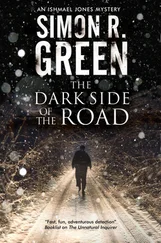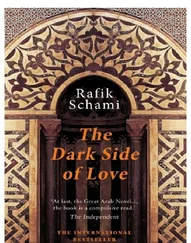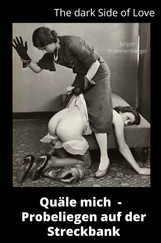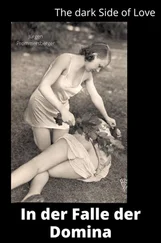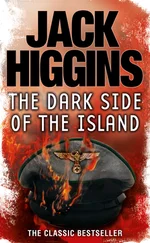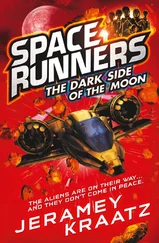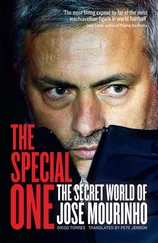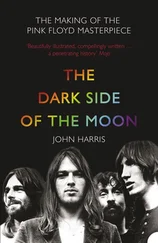Young Kennedy’s involvement with Arvad dwindled by early March. Arvad got divorced in June 1942, moved to California, married the cowboy movie star Tim McCoy, and received her American citizenship. One of her references was Frank Waldrop, her former editor. In an unpublished essay written in 1978 and provided for this book, Waldrop, by then long retired, whimsically recalled how the much-ado-about-nothing FBI investigation had begun. A young female Times-Herald journalist who, wrote Waldrop, was Arvad’s rival for the attentions of the handsome Jack Kennedy, breathlessly informed him in the office one day that Arvad had been photographed in Hitler’s box during the 1936 Olympics. “That did it,” Waldrop wrote. “There was a row. So I took Inga by the elbow on one side and the other girl on the other and marched the pair of them over to the Washington field office of the FBI and told the agent in charge: ‘This young lady says that young lady is a German spy.’” At the time, Waldrop wrote, he did not know that a similar report by a fellow female student at the Columbia School of Journalism had been filed the previous year. “Nor did I guess what was going to happen next”—that a memorandum was sent by Roosevelt “directly to Hoover calling on him to have Inga ‘specially watched.’ How did FDR find out about Inga? Who broke in on his war planning to tell him about so trivial a matter, at the very time that the most critical moment of the war in the Pacific—the Battle of Midway—was in the making? I don’t know, though I have tried to find out.” In the end, Waldrop concluded, “Inga was no spy. Never had been. I have the official conclusions of the Department of Justice.” *
Waldrop’s assertions were confirmed in an interview with Cartha DeLoach, the FBI’s deputy director who worked closely with Hoover for nearly thirty years. “The investigation on Inga Arvad never conclusively proved that she was a German espionage agent,” DeLoach told me in 1997. “She had an amorous relationship with John F. Kennedy. And basically that’s what the files contained. She was never indicted, never brought into court, never convicted.”
Joe Kennedy understood what was going on. While some FBI field agents perhaps believed they were dealing with a true national security threat in the pretty Inga Arvad, the men at the top—Franklin Roosevelt and J. Edgar Hoover—were interested in payback, in reminding Joe Kennedy to stay in line and to remember that he was dealing with enemies who would be only too happy to hurt him. The FBI, as Joe Kennedy had to understand, had enough in its file on Jack Kennedy, complete with sound effects, to stop a future political career in its tracks.
Joe Kennedy knew what to do to safeguard his ambitions for his sons off at war. He had strayed from the church of Hoover and now sought redemption. In September 1943, Freedom of Information files show, Kennedy volunteered himself to the FBI bureau in Boston as a “Special Service Contact” and declared that “he would be glad to assist the Bureau in any way possible should his services be needed.” In a letter to Hoover, Edward A. Soucy, the agent in charge of the Boston Bureau, added: “Mr. Kennedy speaks very highly of the Bureau and the director, and has indicated that if he were ever in a position to make any official recommendations there would be one Federal investigative unit and that would be headed by J. Edgar Hoover.” A pleased Hoover accepted Kennedy’s offer and outlined, in a subsequent letter to Soucy, some of the requirements: “Every effort should be made to provide him [Kennedy] with investigative assignments in keeping with his particular ability and the Bureau should be advised as to the nature of these assignments, together with the results obtained.”
The full extent of Joe Kennedy’s machinations will never be known, but he left little to chance. The investigation into Inga Arvad and her relationship with Ensign Jack Kennedy had been supervised inside the Justice Department by James M. McInerney, who in 1942 was chief of the department’s national defense and internal security units. A former FBI agent, McInerney would remain in high policy positions in the Justice Department for the next ten years. In late 1952 McInerney successfully intervened to get Bobby Kennedy, just a year out of law school, a job as a staff attorney on the powerful Senate Permanent Subcommittee on Investigations. In 1953 McInerney went into the practice of law as a sole practitioner, opening up a small office on F Street in downtown Washington. Joe Kennedy and his three sons, Jack, Bobby, and Ted, were among his first clients, and they remained certainly his most important ones. Over the next decade, James McInerney would handle many sensitive matters on behalf of the Kennedy family and Jack Kennedy’s presidential ambitions. Women were seen, bribes were offered, and cases were settled—all in secrecy.
* Kent, after seeing Costello, kept on talking. In a separate interview later in 1982 with the BBC’s Newsnight television show, he explained how easy it had been to smuggle the cable traffic out of the embassy code room. One source, he told the journalist Richard Harris, was to obtain cable copies that were “surplus and were to be incinerated … burnt in an incinerator.… Another source was that Ambassador Kennedy was having copies of important political documents made for his own private collection. Part of my function was to make these copies, and it was quite simple to slip in an extra carbon.” The BBC show reported that Kent, described as an “amateur,” had been followed for eight months by British counterintelligence before his arrest.
* Arvad’s nickname for Baruch, Frank Waldrop told me, was “the old goat.” Baruch could be very indiscreet, Waldrop wrote in an unpublished essay made available for this book, and the FBI agents assigned to wiretap the Arvad apartment gossiped about Baruch’s many telephone conversations with her. During the early years of the war, Waldrop said, he often traded gossip with the old financier, sometimes over lunch on a bench in Lafayette Park, near the White House. “It was on just such a bench,” Waldrop recalled, “that I heard about what was going on down at Oak Ridge, Tennessee—something about a bomb made of split atoms—for which Baruch was helping put together the labor force. He told me to keep mum and I did, but that should signify that Baruch was a very heavy carrier of important information in World War II. And he was tickled to have Inga come up to visit him, weekends, at his place on Long Island. He also carried on long palavers with her on the telephone which the FBI faithfully took down.” It’s not known whether Hoover, an expert on double standards, intervened with Baruch, as he did with Joe Kennedy.
* In an interview for this book in 1995, the ninety-year-old Waldrop, who first met Joe Kennedy, a fellow isolationist, in the 1930s, said that “the best way I know how to tell you how much smarter Franklin Roosevelt was than Joe Kennedy” was by citing a classic FDR story that had been relayed to him by Edward A. Tamm, a senior aide to Hoover who later became a highly respected judge on the U.S. Court of Appeals for the District of Columbia. Tamm began, Waldrop said, by asking whether Waldrop “knew the difference between an amateur and a pro.” Waldrop said no. Tamm then told him the following: “FDR asked Hoover to come along to the White House. Hoover brought me along. He asked Hoover to get the goods on Jim Farley,” the politically contentious postmaster general who was suspected by Roosevelt of leaking inside stories to an anti-Roosevelt newspaper columnist.
“Hoover said, ‘I won’t do it.’
“FDR outraged: ‘What!’
“Hoover: ‘I won’t do it.’
“FDR: ‘I’m ordering you to.’”
Читать дальше

